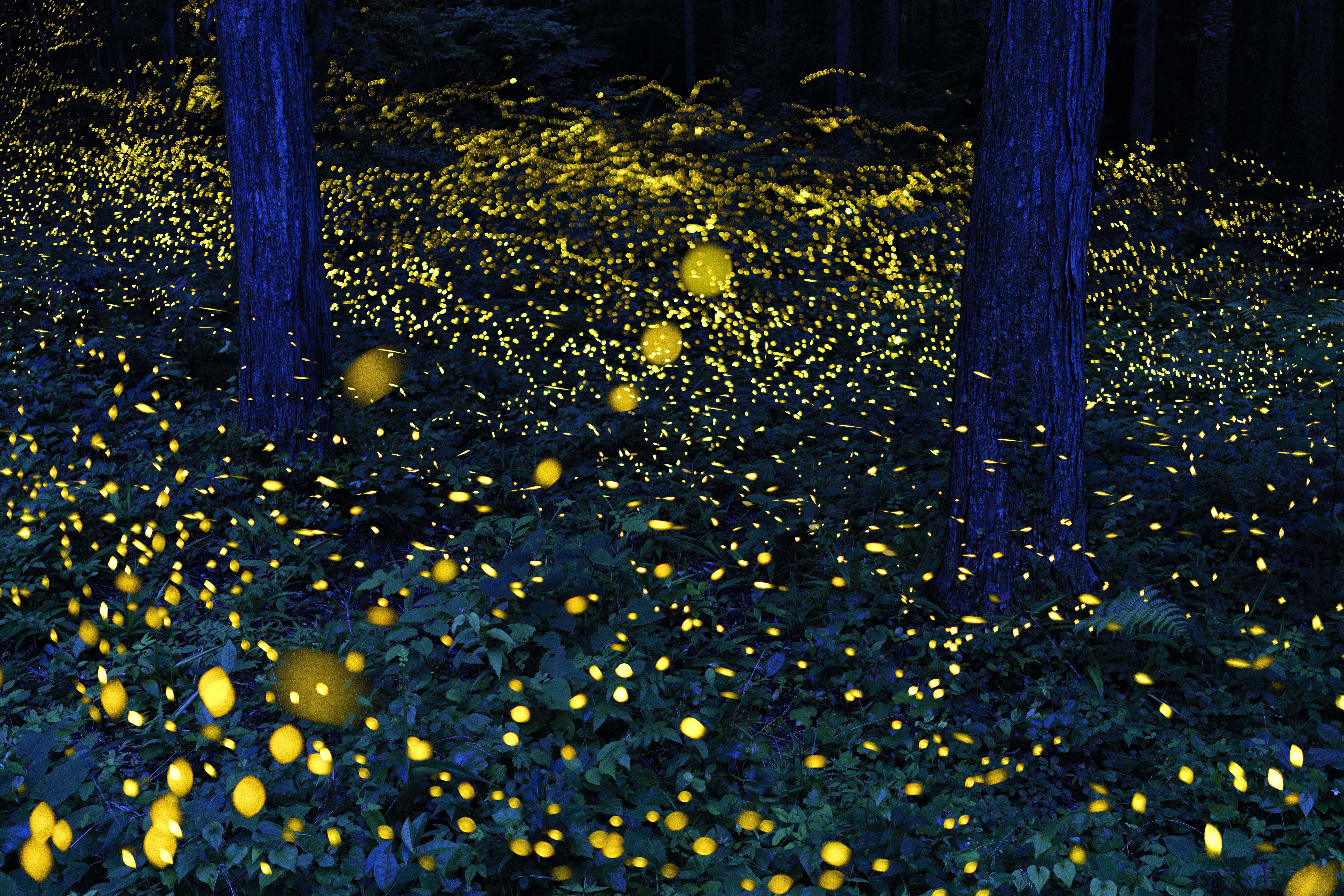Firefly is any member of a family of soft-bodied beetles known for producing glowing or flashing light. Fireflies are also called lightning bugs. There are about 2,000 species (kinds) of fireflies. Members of the firefly family live on every continent except Antarctica. In the United States and Canada, there are about 150 species. The common eastern firefly, also called the big dipper firefly, is one of the most familiar North American species found east of the Rocky Mountains. These fireflies are active in the early evening and can be seen floating silently over meadows and lawns, flashing their yellow lights.

Not all members of the firefly family give off light as adults. However, the larvae (young) of all firefly species and the eggs of some species give off light. The glowing larvae and the flightless females of some species are often called glowworms.
Body.
Adult fireflies are flattish, oblong insects about 1/4 to 3/4 of an inch (5 to 20 millimeters) long. Most are dull brown or black, with red, orange, or yellow markings. Like all beetles, fireflies have two pairs of wings but use only the second pair for flying. The first pair, the elytra, forms a protective cover over the second pair. The females of some firefly species do not fly, and their wings and elytra are very short or absent.
Firefly light organs are usually located on the underside of the abdomen–the last section of an insect’s body. A chemical reaction that takes place in the light organs produces the firefly’s light. This kind of light is known as bioluminescence. This light produces no heat.
Life.
Adult fireflies use their lights to find mates. Each firefly species has its own light signal. Female fireflies perch on the ground or in bushes and wait until a male flies nearby flashing the correct signal. She then answers him with her own light.

Fireflies lay their eggs in moist places on or in the ground. The eggs hatch into flightless larvae that are often seen glowing on damp lawns and along streams. They use the light to warn predators that they are poisonous. The larvae take one or two years to develop. They then pass through a brief pupal state, during which they change into adults. The adults live for 5 to 30 days. Firefly larvae eat snails, earthworms, and other insect larvae. They kill their prey by injecting poison into them. Adult fireflies may feed on nectar or eat nothing. Adults of some species do not even have mouths. However, the females of some firefly species prey on the males of other species. They lure the males by imitating the mating signals of the other species. The enemies of fireflies include various birds, frogs, lizards, and spiders.
See also Bioluminescence; Glowworm.
